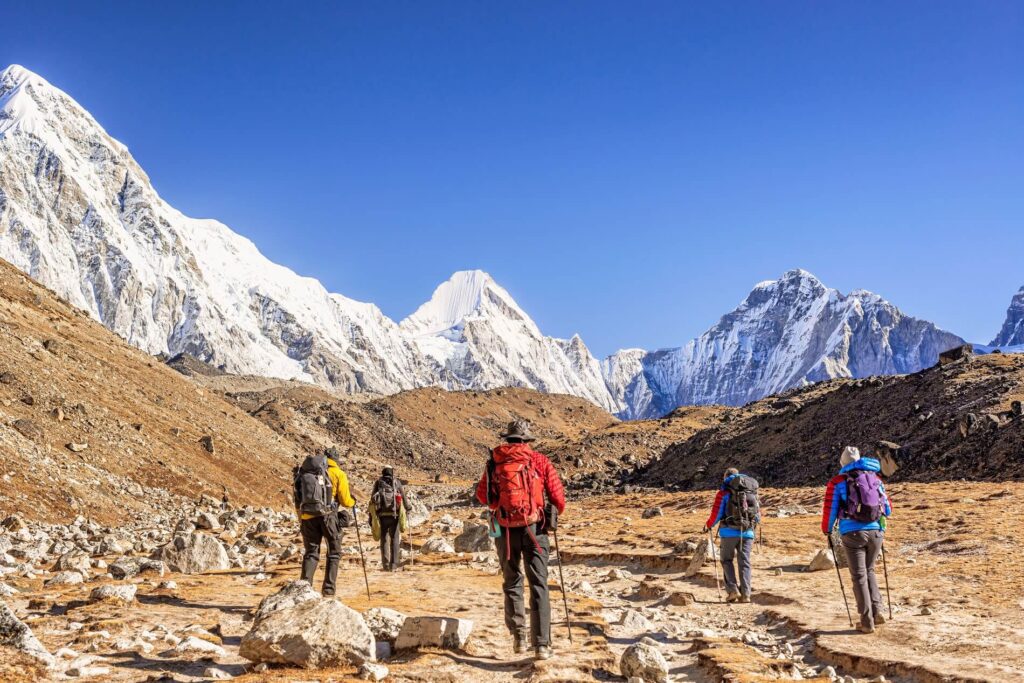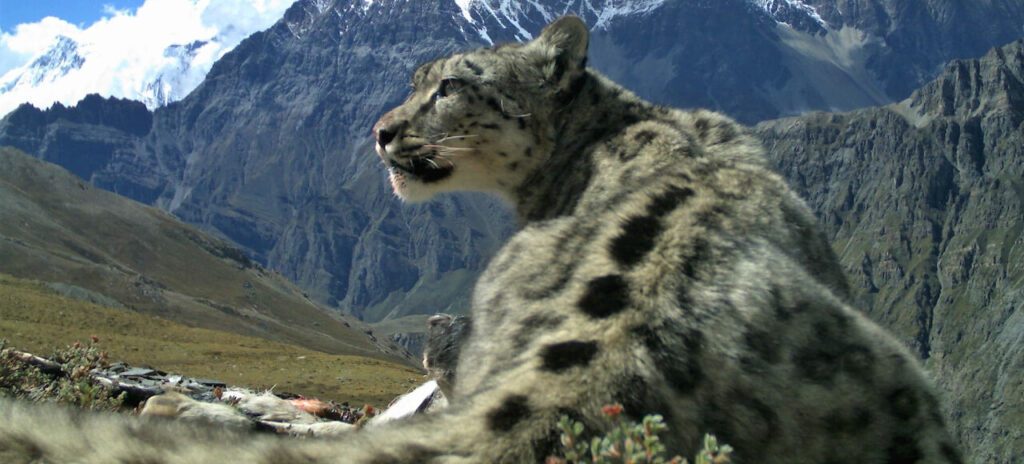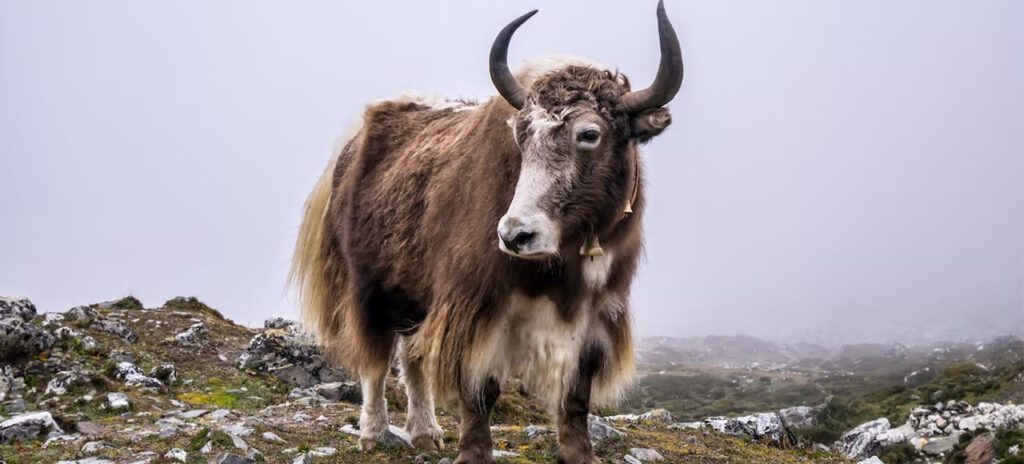Everest Base Camp in November- Get all the information you need to know about the weather, temperature, crowds, festivals, flora, and fauna in this comprehensive guide. From the unpredictable weather and breathtaking views to the bustling crowds and vibrant festivals, experience the thrill and excitement of trekking to the base camp of the world’s highest mountain in November. Read on for a detailed overview of everything you need to know to make the most of your Everest Base Camp trek in November.
Weather at Everest Base Camp in November
When it comes to trekking to Everest Base Camp in November, the weather can be thrilling and unpredictable, adding an extra layer of excitement to this already epic adventure. November marks the end of the autumn season in Nepal, and temperatures start to drop as winter approaches. In the Everest region, temperatures can range from -10°C to 15°C during the day, with the nights becoming much colder. The days are generally sunny with clear blue skies, making for stunning views of the surrounding peaks.

However, the weather can be unpredictable, and it’s not uncommon to experience sudden snowfall or blizzards at higher altitudes. As you trek higher into the mountains, the weather becomes more extreme, and the risk of altitude sickness increases.
Average Temperature at Everest Base Camp in November
Are you planning to trek to Everest Base Camp in November? One of the most important factors to consider is the temperature. As you journey through the rugged terrain of the Himalayas, you’ll experience a range of temperatures that can vary greatly depending on the time of day and your altitude.
More: Everest Base Camp in October – Weather, Temperature, Festivals, Animals
In November, the average temperature in Everest Base Camp can reach up to 15°C during the day, with temperatures dropping significantly at night. As you climb higher into the mountains, the temperature drops even further, and it’s not uncommon for temperatures to reach below freezing at night.
Crowds at Everest Base Camp in November
The Everest Base Camp trek is undoubtedly one of the most popular and sought-after trekking destinations in the world. The trek attracts thousands of trekkers from all over the world every year, and November is no exception. The trail can get quite crowded during this time, especially around the Everest Base Camp, which is the ultimate goal for most trekkers. A diverse crowd gathers at the base camp from seasoned mountaineers to first-time trekkers, there’s a sense of camaraderie and shared purpose that pervades the air. The mood is electrifying at the base station itself. The scene is littered with tents, and when a mountaineer returns from a successful summit try, there will occasionally be cheers and joyfulness in the air.

Being in the shadow of the highest mountain in the world inspires amazement and humility as well as provides breathtaking views of the nearby summits. But perhaps the most exciting part of the Everest Base Camp trek in November is the shared experience of overcoming challenges and pushing boundaries. Whether you’re struggling to catch your breath at high altitudes or marveling at the stunning vistas, you’re never alone. You’re part of a community of adventurers, all pursuing their own goals but united in their love of the mountains and their respect for the natural world.
Festivals at Everest Base Camp in November
The Everest Base Camp area is well known for its lively cultural customs and events in addition to its mountain ranges. November is one such month when the Everest Base Camp area comes to life with dynamic festivities. Let’s take a closer look at a few of the holidays that people observe in the Everest Base Camp area in November.
- Mani Rimdu Festival: One of the most well-known and important events in the Everest area is the Mani Rimdu Festival. The Tengboche temple, which is situated at a height of 3,867 meters, hosts this three-day celebration in November. The festival, a Buddhist party, commemorates Buddhism’s triumph over the antiquated Bon faith. The monks offer prayers to the gods, recite chants, and perform mask dances as part of the celebration.
- Chhath Puja: Hindus celebrate Chhath Puja to worship the sun god, Surya. They celebrate the festival in November, and it lasts for four days. During the festival, people fast and offer prayers to the sun god, seeking blessings for health, wealth, and prosperity. In the Everest Base Camp region, people celebrate the festival with great devotion, and they gather together to offer their prayers to the sun god.
Also Read: An Overview of Everest Base Camp
Flora and Fauna at Everest Base Camp in November
Flora
As the rainy season has passed and the weather is clear and dry, November is a great month to explore Everest Base Camp. Trekkers will find it pleasant due to the moderate temperature. The region’s flora is in full blossom at this time of year, enhancing the attractiveness of the scenery.
During the Everest Base Camp trek in November, you will come across a variety of plants, including:
- Rhododendrons – Nepal’s national flower, Rhododendrons bloom in various colors such as white, pink, purple, and red. During November, these flowers are in full bloom and offer a stunning sight for trekkers.

- Blue Poppies – The Blue Poppy is one of the rarest and most stunning flowers in the Himalayas, with unique blue petals. They bloom during November and can be seen in higher altitude regions.
- Primroses – Primroses are small, delicate flowers that bloom in various colors such as yellow, pink, and purple. They can be found on the lower altitudes of the trek and add a colorful charm to the landscape.
- Mosses – A variety of mosses thrive in the Himalayan region, and you can observe them growing on rocks and trees along the trekking route.
- Junipers – Junipers grow in the Himalayas, and people use their leaves and berries in various medicinal and culinary applications.
- Himalayan Blueberries – The Himalayan Blueberry is a sweet and juicy fruit that grows in the region during November. These berries are a great source of antioxidants and vitamins.
Fauna
If you’re planning a trek to the Everest Base Camp in November, get ready to witness the diverse and unique fauna that will mesmerize you along the way. Let’s take a closer look at some of the fascinating fauna you might come across during your trek.
- Snow Leopard: The elusive and magnificent snow leopard is one of the most sought-after animals that trekkers hope to spot during their Everest Base Camp trek. Although the snow leopard is rare and difficult to spot, it is known to inhabit the region.

- Musk Deer: The Himalayan region contains a small, shy animal known as the musk deer. Poachers target them due to the high value of musk in the perfume industry. Despite conservation efforts, the musk deer’s population has dwindled, and they are now considered endangered.

- The Himalayan Tahr: People can find the Himalayan Tahr, a type of wild goat, in the mountainous regions of Nepal. Trekkers appreciate them for their shaggy coats and curved horns, making them a popular sight.
- Red Panda: The Red Panda, a cute and cuddly creature, is a rare sight to behold in the wild. People know these animals for their distinctive red fur and playful nature.
- Golden Eagles: Golden Eagles are magnificent birds of prey that soar high in the Himalayan skies. These birds are known for using their powerful talons and sharp eyesight to hunt for prey.
- Himalayan Monal: The Himalayan Monal, considered the national bird of Nepal, is a colorful bird. Birdwatchers find the male birds with a striking plumage of iridescent green, blue, and red popular sights.
- Yak: The Yak is a domesticated animal commonly used as a pack animal in the Himalayan region. People know Yaks for their shaggy coats and their ability to survive in harsh mountain conditions.

Side Trek
Any adventure enthusiast’s dream comes true with the Everest Base Camp Trek, and November offers the best time to experience this thrilling journey. While the journey to the base camp itself is exhilarating, you can add more excitement and beauty to your journey with some side treks. Let’s explore some of the favorable side treks in Everest Base Camp in November.
Other Trek which can be done in November
- Kalapatthar Trek: Kalapatthar is a small peak near the Everest Base Camp. It is one of the most popular side treks among trekkers due to its spectacular view of the Everest summit. The trek is a steep uphill climb and requires some fitness, but the reward is worth the effort. The view of the Everest Peak and the surrounding mountains from the top of Kalapatthar is simply breathtaking, especially during November when the weather is clear.
- Gokyo Ri Trek: Another well-liked alternative journey among those who are hiking to Everest Base Camp is the Gokyo Ri journey. Even though it is a little lengthier and more difficult than the Kalapatthar Trek, it provides an even more breathtaking perspective of Mount Everest. The Gokyo Lakes, a collection of turquoise-colored lakes situated at an elevation of 4,700 meters, are reached via the journey.
- Cho La Pass Trek: The Cho La Pass Trek is among the most challenging and thrilling side treks in the Everest Base Camp Trek. At a height of 3,440 meters, the town of n Namche Bazaar serves as the starting point for the journey. From here, you will hike through stunning rhododendrons and pine tree woods home to many different wildlife species, including the snow leopard. You can learn about the Sherpa culture and customs as you travel through some of the most isolated and picturesque communities in the area.
- Tengboche Monastery Trek: Tengboche Monastery Trek is a relatively easy side trek that takes you to the Tengboche Monastery, the largest monastery in the Khumbu region. The trek offers a glimpse of the Sherpa culture and traditions and a stunning view of the mountains. The monastery is a peaceful and spiritual place where you can take a break from the strenuous journey to the Everest Base Camp.
Tips for Everest Base Camp in November
Are you planning to go on the Everest Base Camp Trek in November? If so, you’re in for an exciting and unforgettable adventure! However, as with any trek, you should prepare and take certain precautions to ensure a safe and enjoyable experience. We’ll offer you some essential tips for your Everest Base Camp Trek in November.
Also Read: Everest Base Camp Trek Route
Pack appropriately
The weather in November in the Everest region can be quite unpredictable, so it’s important to pack appropriately for both warm and cold weather. You’ll need to bring warm layers, waterproof clothing, a good-quality sleeping bag, and sturdy hiking boots. It’s also important to bring a good-quality backpack that can hold all of your essentials, such as food, water, and extra layers.
Hire a guide or porter
While it is possible to do the Everest Base Camp Trek alone, hiring a guide or porter can make the trek more accessible and safer. A guide can help you navigate the trail and provide information about the region, while a porter can carry your gear and make the trek less physically demanding.
Be prepared for the unexpected
Weather conditions in the Everest region can change quickly, so it’s important to be prepared for the unexpected. This includes carrying extra food and water, a first aid kit, and a backup plan in case of an emergency.
Merits and Demerits of Everest Base Camp in November
Merits
- Pleasant Weather: November is the start of the peak trekking season in the Everest region. The monsoon season ends in September, and by November, the skies are clear and the air is crisp. The temperature during the day is mild, and at night, it can get chilly. The weather in November is perfect for trekking, with clear skies offering spectacular views of the Himalayan peaks.
- Less Crowded: The Everest Base Camp trek is a popular trekking route, and during the peak season of October and November, the trail can get crowded. However, November is slightly less crowded than October, which means you can enjoy the trail without the hustle and bustle of the peak season.
- Stunning Scenery: November is a great time to trek in the Everest region as the clear skies offer stunning views of the snow-capped mountains, including Mount Everest.
- Cultural Experience: The Sherpa people, who are the inhabitants of the Khumbu region, have a rich culture and tradition. During the trek, you can interact with the locals and learn about their way of life. You can also visit monasteries and gompas and learn about the Buddhist religion.
- Festivals: November is a festive month in the Khumbu region. The Sherpa people celebrate the Mani Rimdu festival, which is a colorful and vibrant festival that celebrates the victory of Buddhism over Bon, the ancient religion of Tibet. The festival is held in the Tengboche Monastery and is an excellent opportunity to witness the Sherpa culture.
- Accessibility: November is an excellent month for trekking in the Everest region as the flights to Lukla are more accessible and frequent than during the monsoon season. The Lukla airport is notorious for its unpredictable weather, but in November, the flights are usually on time.
Demerits
However, you should consider its own set of challenges that come with the trek before planning your trip. While November is a popular month for the trek, you need to consider some demerits before embarking on this adventure.
- Altitude Sickness: Trekkers on the Everest Base Camp trek commonly face altitude sickness. The higher altitudes can induce a range of symptoms, including headaches, nausea, and dizziness. The cold weather in November can exacerbate these symptoms, and managing them can pose a challenge. Proper acclimatization and taking necessary precautions are important to prevent altitude sickness.
- Difficulty Level: The Everest Base Camp trek is challenging, even for experienced trekkers. The trek involves long days of walking, with steep ascents and descents. The cold weather in November can make the trek even more difficult, as it can be challenging to stay warm and maintain energy levels. Being physically fit and mentally prepared before attempting the trek in November is important.
Let our expert team at Asian Heritage Treks and Travel take care of everything — from guided tours to personalized packing tips and travel arrangements.
Plan My Everest Trip







